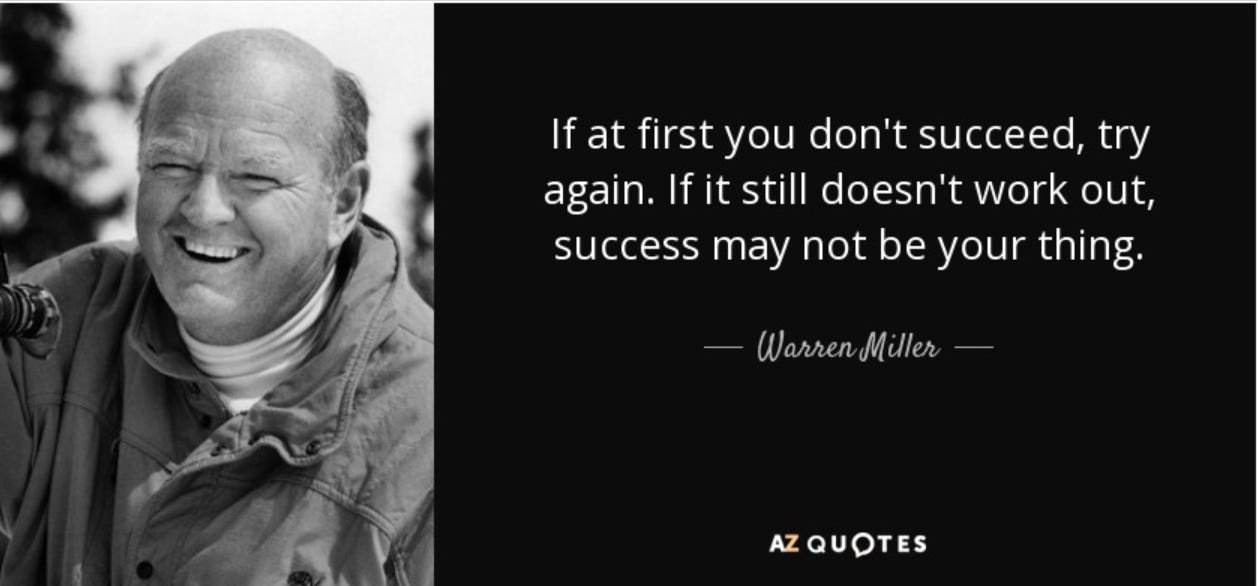Much has been posted about the currently popular topic - at least in nerdy lifting circles - about fatigue management. My Instagram search page is lately full of young broccoli haired lifters doing cable lateral raises with cuffs placed above the elbow, explaining how leaving exactly 1.42687 reps in the tank perfectly balances the mystical stimulus to fatigue ratios for their non-existent deltoid muscles.
For those of us who try to incorporate useful concepts into training without becoming overly obsessed with taking every idea to it’s absolute endpoint regardless of how absurd it becomes it real life, we can use the Rippetoean/Starting Strength categories of Novice, Intermediate, and Advanced not just as definitions but also for their training implications for fatigue management.
Lifter Categories: Novice, Intermediate, Advanced
These 3 categories are defined by Starting Strength not by how much weight you can lift but how quickly you go through the stress—> recovery —> adaptation cycle to produce a new PR. Even though there's a sliver of fuzziness at the margin, more so between Intermediate and Advanced, having these as defined categories is important for properly organizing your training.
Novices can do produce a new PR every time they train, or almost every time, as long as they have 2-3 days of rest in between training bouts. The famous Novice Linear Progression that has gotten tens of thousands of people much stronger in a matter of months, is based on this concept.
Intermediate can typically do this every 1-2 weeks. Programs like the Texas Method are based on this concept, as are many iterations of HLM programs (though it should be noted that HLM is more of a template than a program and can be adapted to Advanced lifters as well).
Advanced lifters are defined by their ability to do this on a longer timeline of about once a month, or perhaps after a while, on an even longer but still planned and predictable timeline.
My personal take on Advanced is very slightly different: Instead of being made on planned and predictable timelines, progress ebbs and flows through training, with a lifter often hitting a PR or flurry of PRs in a short period of time, then needing to come back down from that high and recover through lighter training not just for days or weeks, but often months - and sometimes a year or more! Then eventually the lifter starts his next run at a PR and it takes months to build back up to it. Then maybe he hits it, maybe he doesn’t. Rinse and repeat.
Regardless of this detail, the overarching point is that progress through a lifter’s training career conceptually flows through 3 basic stages:
Novice - rapid and highly predictable progress.
Intermediate - slower but still fairly quick, and slightly less but still mostly predictable progress.
Advanced - very slow and much less predictable progress.
We can use this broader conceptual understanding not just to make definitions but also to apply to real life training.
Fatigue Management
Novices only need reactive fatigue management: fail, try again - succeed, move on; fail again, do a re-set and work back up. No need to proactively manage fatigue, as Novices are definitionally unable to significantly fatigue themselves with intensity provided volume is relatively stable.
For early Intermediates this is often the case too, though a very small amount of selective proactive fatigue management can take place - for example, even if all planned numbers are still going up but the lifter feels beat up and ground down over an extended period of time, not just one or two days, and has been regularly PR-ing for a while, you might proactively take a light week.
For late Intermediate (and even more so for Advanced) lifters, proactive fatigue management is generally required. At this stage you actually can generate enough fatigue to set yourself back. You can't just constantly push til you fail or you'll quickly grind yourself into the dirt. You can't just go as hard as possible every time or you'll end up deep in the ditch and have to dig yourself out. You have to implement some form of proactive fatigue management. It can be planned, autoregulated, or some of both, but it has to be proactvely taken into account instead of implemented solely in reaction to failure or excessive fatigue buildup, if you want to avoid a bad time.
How do you proactively manage fatigue? There are many strategies you can use, and unfortunately one of the characteristics of being an Advanced lifter is that at this point, your training needs to be personalized and specific, so I can’t give a blanket rule that this is exactly how you should do it.
But the possibilities are many: Purposely leaving reps in the tank on some of your sets, particularly on your big compound, main lifts. Doing variations that provide slightly different stimuli and stress the muscles and the joints slightly differently - some of which can also be “self limiting variations” like a safety bar squat or paused close grip bench where you lift less weight at the same level of effort, thereby managing fatigue. Manipulating the total volume/tonnage of your workouts over time so as not to just constantly have it increase endlessly. Plus implementing the occasional light/deload week as mentioned above in the early Intermediate section. And so on.
As an Advanced lifter, you will need to figure much of this out for yourself with experience. There’s no absolute single right answer. But the concept, the idea, that late Intermediates and Advanced lifters need some type of proactive fatigue management as a result of their much greater ability to apply stress to themselves and thus induce fatigue, is sound and matches my experience both as a long-time Advanced lifter and as a coach.





Fantastic article, Michael. Enjoyed veering off to read about the Texas Method and HLM (?) as well. Again, the more I read your stuff, the more I think I need some qualified guidance!